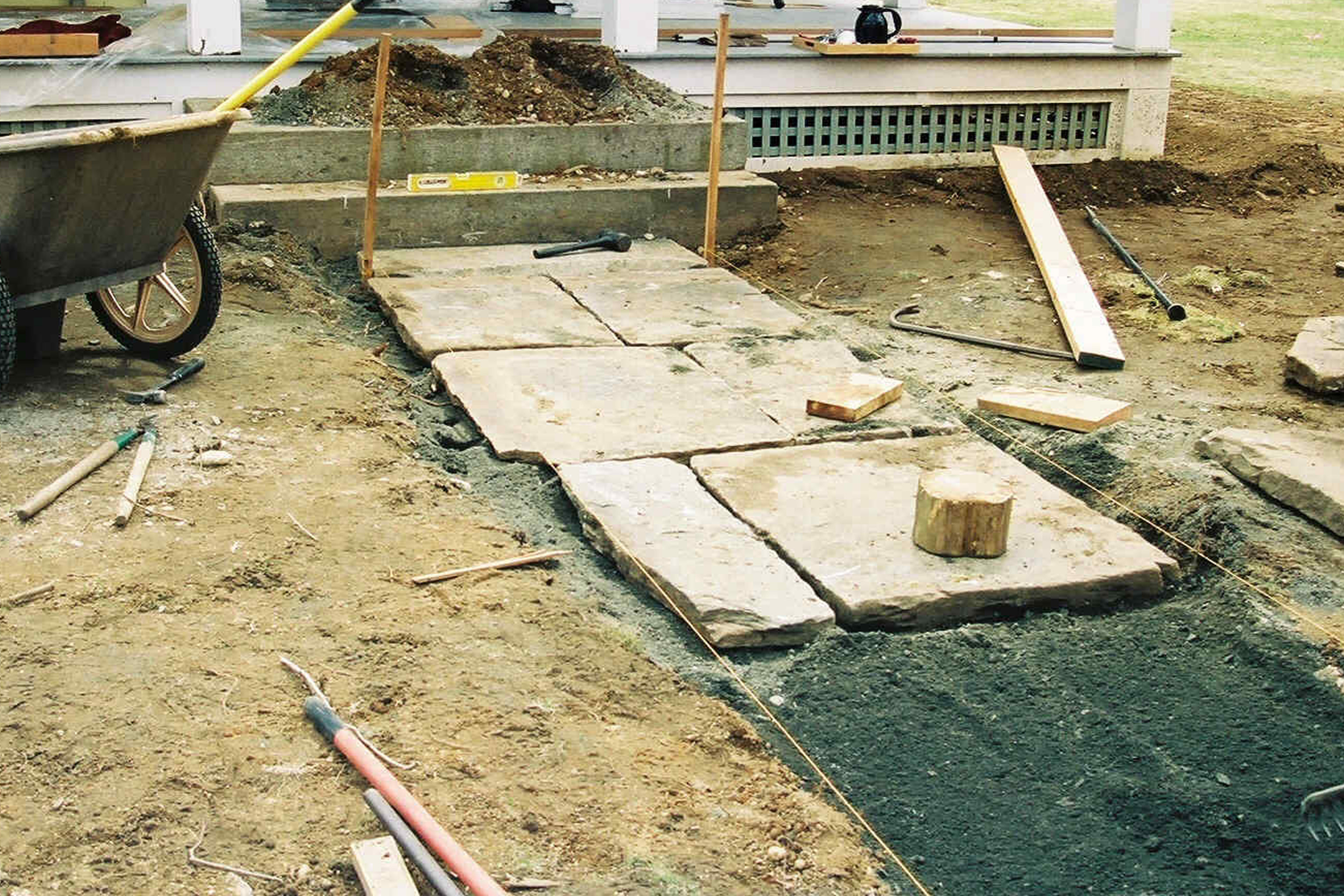Make a path
Design and build a garden path using stones, pebbles, and sand; measure spacing, arrange patterns, and test safe walking carefully.



Step-by-step guide to design and build a garden path with stones, pebbles, and sand
How to Create a STUNNING Garden Path | GARDEN | Great Home Ideas
Step 1
Put on your garden gloves to keep your hands safe.
Step 2
Carry all materials to the flat area where you want your garden path.
Step 3
Pick a safe flat route for your path and mark the start and end with sticks or rocks.
Step 4
Clear the marked path area of grass sticks and loose stones using the trowel.
Step 5
Measure a comfortable step distance with the tape measure to decide how far apart your stones should be.
Step 6
Mark positions along the route using small piles of sand or short sticks spaced by your measured step distance.
Step 7
Lay out your stones and pebbles beside the path to try different shapes and patterns before fixing them.
Step 8
Dig a shallow flat spot at each marked position with the trowel so each stone will sit solidly.
Step 9
Add a small handful of sand into each dug spot to make a level base for the stone.
Step 10
Place a stepping stone on each sand base and press or tap it down until it feels level and stable.
Step 11
Fill the gaps between the stones with pebbles and sweep extra sand into cracks to lock everything in place.
Step 12
Walk slowly along the path to test each stone for stability and comfort and note any loose stones.
Step 13
Ask an adult to inspect the path and help fix any stones that move or feel unsafe.
Step 14
Share a photo and a short description of your finished garden path on DIY.org.
Final steps
You're almost there! Complete all the steps, bring your creation to life, post it, and conquer the challenge!


Help!?
What can we use if we don't have garden gloves, sand, or a tape measure?
Use sturdy kitchen or leather gloves instead of garden gloves, fine gravel or potting soil in place of sand for the stone bases, and a length of string plus a ruler or measured footstep to replace the tape measure when marking step distances.
The stones keep wobbling — what should we do?
Dig each marked spot a bit deeper with the trowel, add or level more sand as a base, then press or tap the stepping stone down firmly and re-test by walking slowly, asking an adult to help fix any stones that still move.
How can we adapt this activity for younger or older children?
For younger kids, give safe tasks like collecting pebbles, laying out stone patterns beside the route, and sweeping sand into cracks, while older children can measure step distances with the tape measure, dig and set stones, and take the photo and write the DIY.org description.
How can we personalize or improve our finished garden path?
Personalize the path by arranging stones into shapes or patterns, adding colored pebbles between the stones, planting low groundcover along the edges, or asking an adult to help secure stones with extra sand or gravel before sharing a photo on DIY.org.
Watch videos on how to design and build a garden path with stones, pebbles, and sand
How to Make a DIY Gravel Path
Facts about garden design and landscaping for kids
📏 A compacted base of gravel and a layer of sand keeps stones level and reduces wobble underfoot.
🪴 Garden paths often follow design rules—spacing and turning points help guide people and shape how the garden feels.
👣 Mixing flat stones with pebbles creates a sensory path—different textures help with balance and make walking fun.
🌧️ Permeable materials like sand and gravel let rain soak through, cutting down puddles compared with solid concrete.
🪨 The Romans built paved roads so well that parts of their network still survive after ~2,000 years!
How do we design and build a garden path using stones, pebbles, and sand?
What materials and tools do I need to make a garden path for a child to help with?
What ages is building a garden path suitable for, and how can kids participate?
What safety tips and benefits should I know when making a garden path with my child?


One subscription, many ways to play and learn.
Only $6.99 after trial. No credit card required


